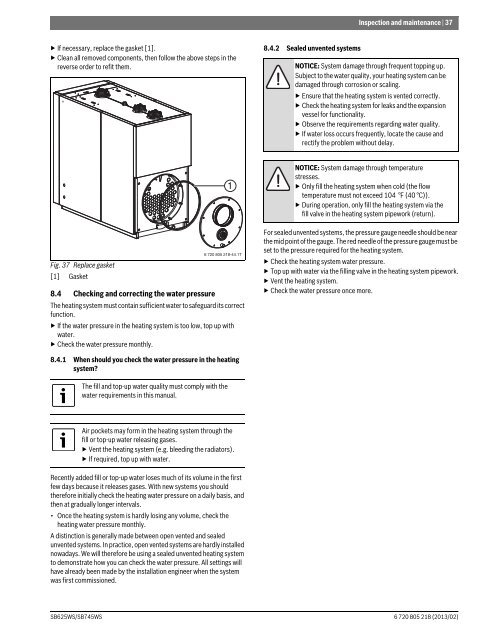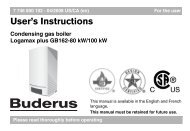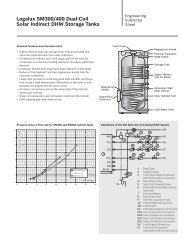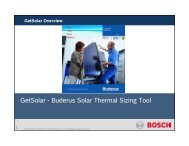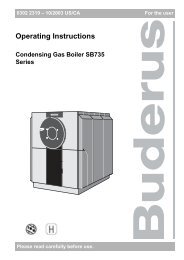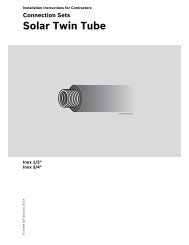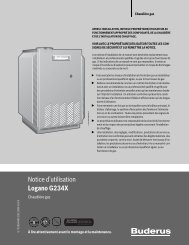Download (PDF 3.9 MB) - Bosch Thermotechnology
Download (PDF 3.9 MB) - Bosch Thermotechnology
Download (PDF 3.9 MB) - Bosch Thermotechnology
Create successful ePaper yourself
Turn your PDF publications into a flip-book with our unique Google optimized e-Paper software.
Inspection and maintenance | 37▶If necessary, replace the gasket [1].▶ Clean all removed components, then follow the above steps in thereverse order to refit them.8.4.2 Sealed unvented systemsNOTICE: System damage through frequent topping up.Subject to the water quality, your heating system can bedamaged through corrosion or scaling.▶ Ensure that the heating system is vented correctly.▶ Check the heating system for leaks and the expansionvessel for functionality.▶ Observe the requirements regarding water quality.▶ If water loss occurs frequently, locate the cause andrectify the problem without delay.Fig. 37 Replace gasket[1] Gasket8.4 Checking and correcting the water pressureThe heating system must contain sufficient water to safeguard its correctfunction.▶ If the water pressure in the heating system is too low, top up withwater.▶ Check the water pressure monthly.16 720 805 218-44.1TNOTICE: System damage through temperaturestresses.▶ Only fill the heating system when cold (the flowtemperature must not exceed 104 °F (40 °C)).▶ During operation, only fill the heating system via thefill valve in the heating system pipework (return).For sealed unvented systems, the pressure gauge needle should be nearthe mid point of the gauge. The red needle of the pressure gauge must beset to the pressure required for the heating system.▶ Check the heating system water pressure.▶ Top up with water via the filling valve in the heating system pipework.▶ Vent the heating system.▶ Check the water pressure once more.8.4.1 When should you check the water pressure in the heatingsystem?The fill and top-up water quality must comply with thewater requirements in this manual.Air pockets may form in the heating system through thefill or top-up water releasing gases.▶ Vent the heating system (e.g. bleeding the radiators).▶ If required, top up with water.Recently added fill or top-up water loses much of its volume in the firstfew days because it releases gases. With new systems you shouldtherefore initially check the heating water pressure on a daily basis, andthen at gradually longer intervals.• Once the heating system is hardly losing any volume, check theheating water pressure monthly.A distinction is generally made between open vented and sealedunvented systems. In practice, open vented systems are hardly installednowadays. We will therefore be using a sealed unvented heating systemto demonstrate how you can check the water pressure. All settings willhave already been made by the installation engineer when the systemwas first commissioned.SB625WS/SB745WS6 720 805 218 (2013/02)


